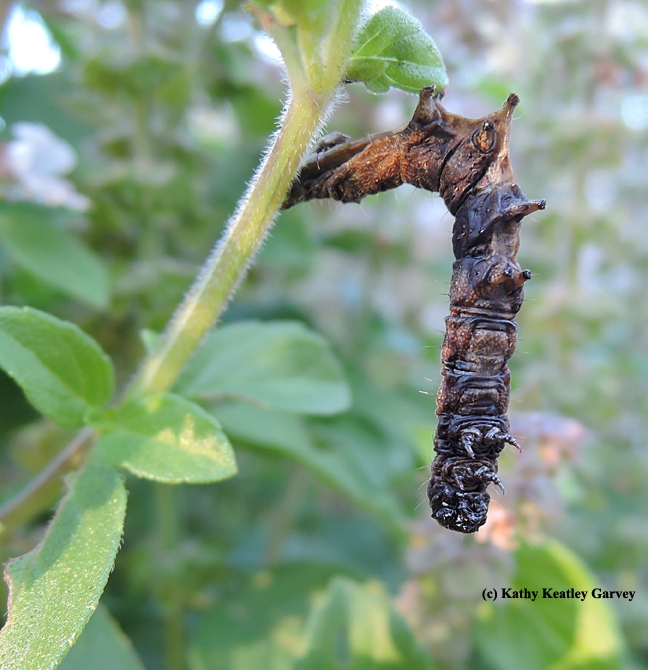It's something you don't see every day.
I'm used to seeing Gulf Fritillary chrysalids hanging from our passionflower vine (Passiflora) but this thing hanging from our African blue basil was not a chrysalid.
"It's a dead caterpillar killed by an infectious virus disease (polyhedrosis)," said butterfly expert Art Shapiro, distinguished professor of evolution and ecology at the University of California, Davis.
Naturalist Greg Kareofelas, an associate at the Bohart Museum of Entomology, figured it could be the remains of a noctuid (moth). "It kind of looks like it," he said. "It is definitely dead."
Those who rear butterflies see polyhedrosis quite often, I'm told. All I've reared are a few Gulf Frits. Scientific name, Agraulis vanillae. They're beautiful reddish-orange butterflies with iridescent silver or "spangled" undersides.
"A dead insect like this, hanging from the upper foliage, is very classical of a NPV-infected caterpillar," said researcher Shizuo "George" Kamita of the Bruce Hammock lab, UC Davis Department of Entomology and Nematology. "Nucleopolyhedrovirus (previously called nuclear polyhedrons virus) is a type of baculovirus that is commonly found in the environment. Baculoviruses are used as a biological insecticide against caterpillars. Twenty years ago Bruce's lab was involved in genetically modifying the wild type baculovirus to improve its ability to reduce feeding damage."
Professor Shapiro pointed out that "Polyhedroses are extremely infectious. Dispose of the cadaver and wash off the areas vertically below it with a forceful spray, if you don't mind wasting the water. The dying larva drips infectious liquid. Kind of like Ebola!"
So we bagged the dead caterpillar and turned the hose on the leaves. As we did, we noticed life as usual: honey bees nectaring the African blue basil blossoms, and a tiny white crab spider lurking.
Life and death in the garden...
Attached Images:
